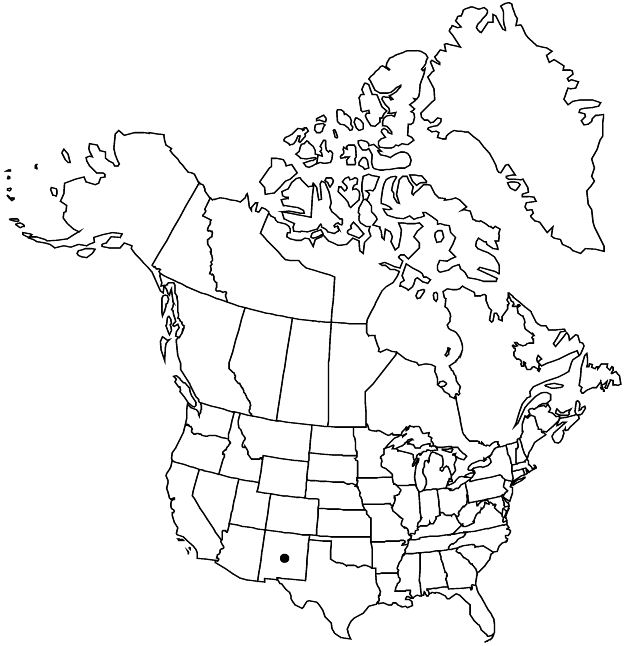Difference between revisions of "Philadelphus microphyllus var. argyrocalyx"
J. Bot. Res. Inst. Texas 1: 901. 2007.
FNA>Volume Importer |
imported>Volume Importer |
||
| (5 intermediate revisions by 2 users not shown) | |||
| Line 15: | Line 15: | ||
|label=Conservation concern | |label=Conservation concern | ||
}} | }} | ||
| − | |basionyms={{Treatment/ID/ | + | |basionyms={{Treatment/ID/Basionym |
|name=Philadelphus argyrocalyx | |name=Philadelphus argyrocalyx | ||
|authority=Wooton | |authority=Wooton | ||
| + | |rank=species | ||
| + | |publication_title=Bull. Torrey Bot. Club | ||
| + | |publication_place=25: 452. 1898 | ||
}} | }} | ||
|synonyms={{Treatment/ID/Synonym | |synonyms={{Treatment/ID/Synonym | ||
|name=P. wootonii | |name=P. wootonii | ||
|authority=S. Y. Hu | |authority=S. Y. Hu | ||
| + | |rank=species | ||
}} | }} | ||
|hierarchy=Hydrangeaceae;Philadelphus;Philadelphus microphyllus;Philadelphus microphyllus var. argyrocalyx | |hierarchy=Hydrangeaceae;Philadelphus;Philadelphus microphyllus;Philadelphus microphyllus var. argyrocalyx | ||
| Line 46: | Line 50: | ||
-->{{#Taxon: | -->{{#Taxon: | ||
name=Philadelphus microphyllus var. argyrocalyx | name=Philadelphus microphyllus var. argyrocalyx | ||
| − | |||
|authority=(Wooton) Henrickson | |authority=(Wooton) Henrickson | ||
|rank=variety | |rank=variety | ||
| Line 61: | Line 64: | ||
|publication year=2007 | |publication year=2007 | ||
|special status=Endemic;Conservation concern | |special status=Endemic;Conservation concern | ||
| − | |source xml=https:// | + | |source xml=https://bitbucket.org/aafc-mbb/fna-data-curation/src/2e0870ddd59836b60bcf96646a41e87ea5a5943a/coarse_grained_fna_xml/V12/V12_1042.xml |
|genus=Philadelphus | |genus=Philadelphus | ||
|species=Philadelphus microphyllus | |species=Philadelphus microphyllus | ||
Latest revision as of 19:13, 5 November 2020
Leaf blades (1.2–)1.5–3(–4.5) × (0.5–)0.7–1.3(–1.9) cm, herbaceous, margins entire, sometimes ± revolute, abaxial surface whitish gray, sericeous initially, but hairs usually becoming erect and chaotic, sometimes remaining appressed, straight or slightly curved, 0.3–0.7 mm, hairs longer (0.7–1.1 mm) and more common along main veins, adaxial surface brown (cuticle thin, papillate) or gray-green (cuticle thick, smooth), glabrous or sparsely to moderately strigose, hairs usually loosely appressed to spreading, rarely erect, 0.3–0.6 mm. Inflorescences 1(–3)-flowered. Flowers 23–35(–40) mm diam.; hypanthium and sepal abaxial surfaces ± densely white sericeous-strigose and villous-lanate, hairs straight and curved to loosely coiled, and with understory of slender curved-crisped hairs, hairs usually completely obscuring epidermis except sometimes in fruit; sepals 4.5–7 mm; petals 10–16(–21) × 7–11(–15) mm; stamens (35–)49–64. Capsules globose to oblong-globose, 6–9.5 × 6–9.5 mm.
Phenology: Flowering Jun–Aug; fruiting Jul–Nov.
Habitat: Limestone and igneous substrates, rocky areas, canyons, drainages, pinyon chaparral, juniper-oak and ponderosa-oak woodlands, limber pine and fir forests.
Elevation: 2000–2700 m.
Discussion
The distribution of var. argyrocalyx is centered in Lincoln and Otero counties. Plants show considerable variation in characters formerly used to separate Philadelphus argyrocalyx and P. wootonii, with both glabrous and sericeous (occasionally to pilose-villous) adaxial leaf surfaces and both narrowly and broadly obovate petals, sometimes even on one plant; this supports including P. wootonii within P. argyrocalyx. The distinctive, erect, rather chaotically oriented hairs on the abaxial leaf surface occur in 93% of the specimens seen; the remainder have a sericeous-strigose abaxial leaf-surface vestiture of the same type of hair (J. Henrickson, pers. obs.). This chaotic vestiture occurs also in similar plants scattered throughout central and northern New Mexico, but in combination with glabrous or sparsely sericeous hypanthia and sepals as in var. microphyllus; these are placed in an expanded var. microphyllus.
Selected References
None.
